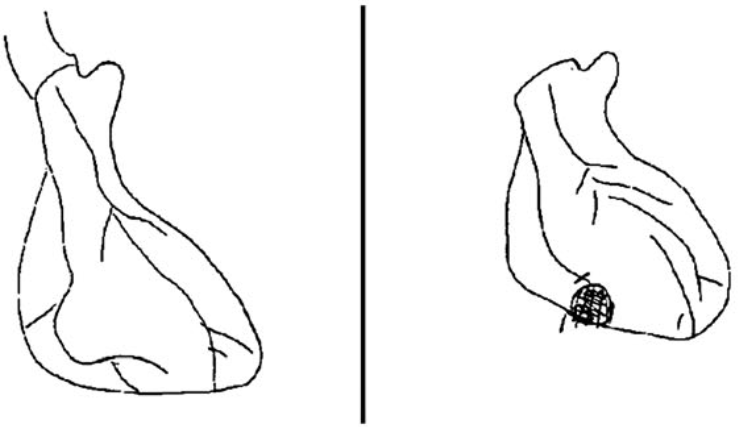
Asking patients to draw the parts of their body affected by illness (and similar drawing challenges) can provide insights into how they think about their illness, the seriousness of their condition, and how well they are likely to cope, among other things. For instance, when people who had experienced a heart attack were asked on repeated occasions to draw their heart, an increase in the size of their drawings over time correlated with more anxiety and a slower return to work.
This example and many others feature in a new paper in Health Psychology Review that’s charted the use of patient drawings in peer-reviewed research, finding that the approach has increased in popularity in recent years. From 1970 to 2002, the average number of papers involving patient drawings published per year was 0.5, whereas that increased to an average of 5.9 per year between 2003 and 2016. In all, Elizabeth Broadbent at the University of Auckland, and her colleagues found 101 relevant studies covering 27 categories of illness (most often cancer) and involving participants from 29 different countries, from Canada to Zimbabwe. “We can utilise patients’ drawings to improve our understanding of the illness experience and inform our clinical interventions,” they said.
Besides assessing drawing size, other approaches used in this field include identifying themes in drawings; looking for distortions or omissions; studying drawing styles, such as use of colour; and analysing facial expressions.
Other study examples that feature in the review include research with brain injury survivors in which those who drew greater damage on their brain also tended to experience a longer recovery time and a worse quality of life; research with kidney transplant patients in which those who drew their kidneys larger tended to have higher anxiety and lower feelings of control; research comparing the drawings of healthy and sick children, which found sick children’s drawings featured fewer human figures; and research with AIDS-affected children that showed their drawings featured more bed-ridden people and less beauty and more distress.
There has also been drawing-based research involving people diagnosed with mental health conditions – for instance, a paper published in the 1970s found that drawings by people with depression “had less colour … and more emptiness and amorphousness than other diagnostic groups.”
While the research in this area is fascinating, it has suffered from a lack of methodological consistency such that Broadbent and her team were unable to conduct a meta-analysis (an analysis of findings combined from multiple prior studies). For example, there was great variation from one study to another in terms of the drawing instructions given to participants. This methodological variation also makes it difficult to establish the reliability and validity of using drawings as a research tool.
However, Broadbent’s team are optimistic: they recommend future research use drawing instructions that are as explicit as possible, and they believe patient drawings can offer insights missed by traditional health psychology questionnaires, thus helping to improve and personalise health psychology interventions (that are intended to help patients better understand and cope with their illness and treatment). For a flavor of this approach, here is one of their suggestions:
“One way in which drawings could be used to personalise interventions is for the person delivering the intervention to discuss the patient’s drawing with the patient. Where misconceptions about pathophysiology are evident, these could be pointed out, and patients’ scans or x-rays, or medical test results could be discussed with the aim to correct misconceptions. Where emotions have been drawn, the drawing could be a good starting point for a discussion about how the patient has been emotionally affected by the illness.”
Christian Jarrett (@Psych_Writer) is Editor of BPS Research Digest
Article source: http://feedproxy.google.com/~r/BpsResearchDigest/~3/Q258aOOZmH0/
